

South Africa
Southern Africa
UK
Campsites (Africa)
The photos say it all really - amazing, miles of sandy beaches that just go on and on. The campsite is amongst the trees behind the beach. After the sand driving course we stayed on for another couple of days. We visited Ponta do Ouro, a few miles further South, which boasts a nightclub (used by weekending South African youngsters) which we certainly didn't visit and a market with lots of little stalls selling a huge range of goods, which we did visit and enjoyed walking round. When we moved on we were very glad that we'd got a GPS unit with the Tracks 4 Africa software - we'd never have found our way otherwise on the single lane sandy tracks, that would suddenly branch off into 2 tracks. We'd been warned that the local traffic police often stopped foreign vehicles and issued on-the-spot fines. Sure enough we were stopped but the officer was very polite, asked to see our documents and then let us carry on our way. This is in the Maputo Elephant Reserve and took 2 hours of driving on sandy tracks from the 'main' gravel road. This campsite was the most primitive that we stopped at (just a long drop toilet) but in a beautiful location. We followed a grassy track to the top a a nearby hill to get a photo of the beach. We had a drive around part of the reserve for a day (saw no-one else all day!) - once again the GPS unit was essential. We spent most evenings watching the 'Bush TV' - our camp fire. Although we took 2 gas canister we only used gas on one occasion (our first night at Mkuhze). All the rest of the time we would light a fire on the sand or use our braai (BBQ). There was usually plenty of driftwood that could be collected or we could buy wood or charcoal from the locals. On the recommendation of Kevin and Debbie, who we met at the Milibangalala campsite we travelled up to the little fishing village of Santa Maria and stayed at the nearby resort, ponta Torres. There was no camping available so we ended up staying in a very comfortable cottage with room for 8 people - luckily we were just charged for the 2 of us as it was out of season of but even so it cleaned us out of most of our cash! As this beach is North-West facing and is protected by an off-shore island it was much calmer than the previous places. It's also very shallow and a low tide we could walk out for miles however at high tide the water comes right up to the resort. While out walking we came across several squid in the shallow water. This was was high and dry on the sand, looking uncomfortable and squeaking (honest!) so I picked it up by a tentacle and threw it into the water where it appeared to be much happier. From Ponta Torres we had a long sandy track route back through the Maputo Elephant Reserve. At one point we found our way blocked by a tree that an elephant had pushed across the road (we never saw any elephants as they are very nervous having been decimated during the civil war). To start with Kev used his axe to try and chop away the undergrowth but to no avail so we ended up using the winch to drag the creepers and branches away. Fortunately the trunk of the tree was high enough above the track and quite firm so we were drive carefully through. Rather than driving the long way round the estuary to the capital, Maputo, we decided to take the ferry from Catembe. The jetty was only a single track and also used by people using the smaller passenger ferries. It took a good half hour for the 10 vehicles to be loaded - we were amazed that they got them all on. They kept getting the vehicles at the back to move around a bit until they made enough room for the last truck! Bilene is situated on a lagoon which is separated from the ocean by the dunes, although at very high tides the sea does come over the dunes and into the lagoon which was shallow and flat calm. Most of the campsites have locals who offer to wash up, collect firewood etc. We often used them in Moz as it's a way of giving some employment to local people. Most have pretty good English - certainly much better than our Portuguese! Our helper at this site was called Earnest and got us a kilo of prawn for 200 Meticais (about £4) which lasted us for 2 meals - they were delicious. After this we bought prawns at all the campsites. We also bought some fish on one occasion and half a dozen crabs on another. This was the quietest site that we visited - there was only us there for the 2 nights that we stayed! The 'rocks' in the distance are actually the boilers and crankshaft of a ship that sunk. It's in 'coconut country' and on the way down a sandy track to the camp we passed thousands of coconut trees, a lot of them underplanted with other crops. The part owner and site manager, Leonard, was delighted to see us and showed us around the site that he's busy improving. As well as refurbishing the campsites he's building houses for guests / backpackers. This building is the bar, which he's just finished, and is made entirely of parts of coconut trees - just about every bit is used, the leaves and the trunks and anything left is used for firewood. THis was the only campsite that we stayed at where the pitches looked out directly onto the ocean. We had a great view and frequently saw whales 'blowing' out at sea, however when it got windy the site was very exposed. We had a trip out to Inhambane one day. This is the jetty where you can take dhow trips or take a passenger ferry across the bay to Maxixe (pronounced Masheesh). We enjoyed looking around the market stalls (bought more prawns of course!) and even found an Internet cafe - but no Internet access that day! We stopped here for a meal and took a photo looking back across the bay to Inhambane. On our way again we passed the Tropic of Capricorn so had to stop for a photo. Still coconut country. This was the busiest site that we stayed at although most people were staying in chalets whereas we camped. We had to be careful choosing a site as it was quite windy when we arrived and as the whole site was amongst coconut trees we didn't want to put up our tent or park the truck anywhere where they might get hit by a falling coconut. We did however open up a couple of coconuts, Kev having bought a machete for the purpose at the market in Massinga - yet another hour or so spent wandering around the market stalls with their tiny alleyways. Near the campsite was an enterprising local who'd opened up a bakery so we bought fresh rolls each morning. This was the northernmost stop on this trip. The sea here was very shallow and very calm, probably because it's protected by several offshore islands. We had a trip out in a dhow to one of the islands and did some snorkeling - fantastic variety and number of fish. At low tide the locals were out fishing, some with nets and others in boats. Mkhuze Game Reserve (South Africa)
Mozambique and Kruger 2008 - Mozambique 2: The Beaches
Ponta Malangone.

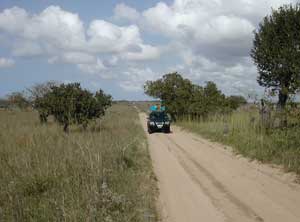
Ponta Milibangalala.

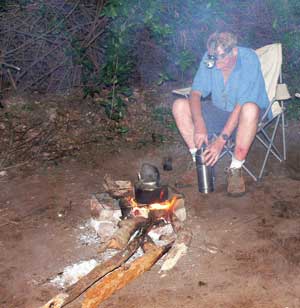
Ponta Torres

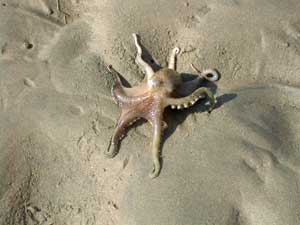
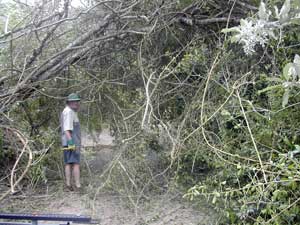
Catembe
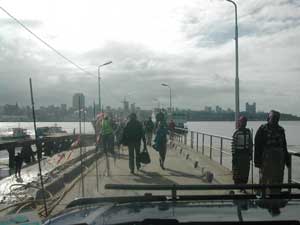
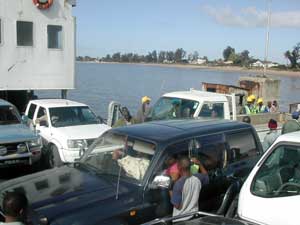
Bilene

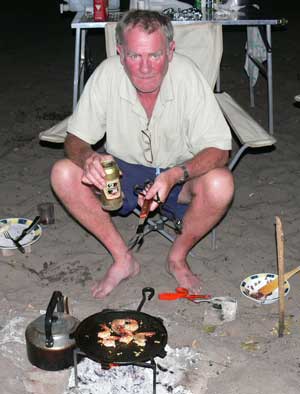
Praia do Sol e Mar


Jangamo

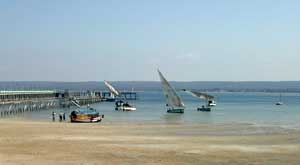
Maxixe

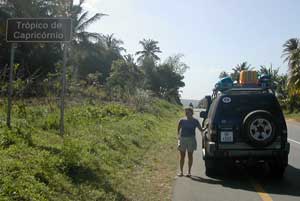
Morrungulo

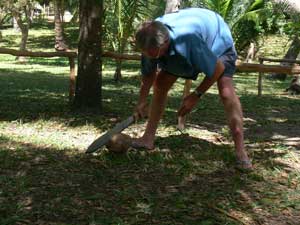
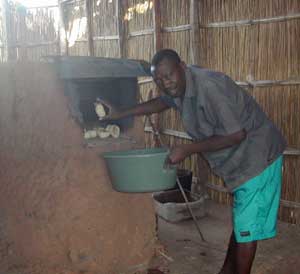
Vilanculos

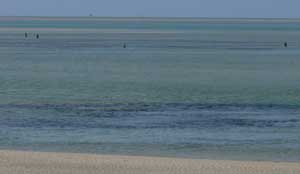
Mozambique 1: Sand driving course
Mozambique 2: South coast beaches
Mozambique 3: Inland to the Kruger
Kruger National Park, South Africa
Diary.